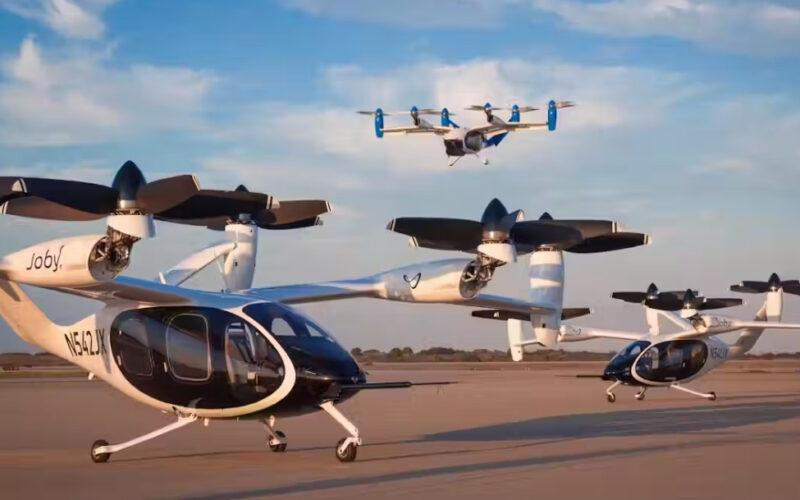It is not too long ago that the concept of commercial passenger flights in small-scale electric-powered aircraft would have been little more than a fantasy – a concept that may have appeared in comic books imagining how the future of travel might look.
Fast forward to the modern day, and that dream is fast becoming a reality. Indeed, it is likely that within the next 18-24 months, the urban air mobility market (UAM) will take off, with several different types of eVTOL (electric Vertical Take-Off and Landing) aircraft being certified for commercial operations and carrying fare-paying passengers in many major cities across the world.
The basic design concept of the current set of eVTOL aircraft in development is largely the same – that of a small lightweight battery-powered aircraft capable of carrying 4-6 passengers on short-range flights using multiple sets of rotors/propellors coupled with a conventional wing to provide propulsion and lift.
As the designs of these aircraft have evolved, so too has the original scope of eVTOL operations. Where once eVTOL flights were imagined to be the answer to traffic congestion in major conurbations across the world, their potential application has broadened as their ‘green’ credentials are being fully realized. Although their production (and that of their batteries) are unlikely to meet any ‘carbon-neutral’ metrics any time soon, their operation is largely expected to, with their zero emissions and a much-reduced noise footprint over conventional light aircraft or helicopters.
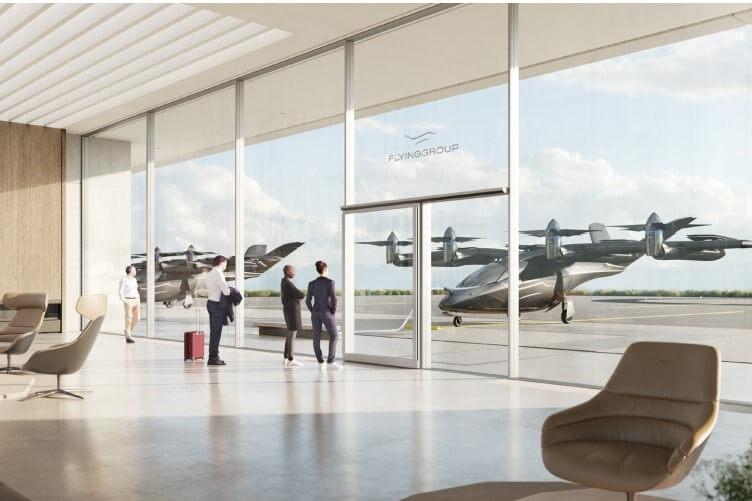
One of the biggest game-changers about eVTOLs is that they require little ground infrastructure given that with their vertical flight capabilities, they do not require the use of a runway which itself requires large amounts of (usually expensive urban) real estate. Instead, ‘vertiports’, as they have become known, will be integrated into both existing airport and non-airport infrastructures, such as the top of tall buildings.
Currently, there are five leading companies leading the way for the introduction of commercial eVTOL flights, all of whom have prototype aircraft in the certification stages of development. Each of these four (Archer Aviation, Eve Air Mobility, Joby Aviation, Vertical Aerospace, and Lilium) is working hard to get their respective aircraft from the development and certification stage and into the hands of commercial operators flying revenue passengers on regular eVTOL flights. Although none of these companies will openly admit it, the race is certainly on to see who will be the first to achieve this goal.
In this article, AeroTime takes a closer look at the main eVTOL contenders, their aircraft, and current order books, and analyses which organization is likely to be the first eVTOL aircraft certified and in active commercial service.
Archer Aviation – Midnight
Californian-based start-up Archer Aviation first revealed plans for the development of an eVTOL aircraft (originally known as ‘Maker’) in June 2021. Yet, while this design was intended to be the company’s first full-scale demonstrator aircraft to be used as a prototype for flight testing and engineering and design analyses, it was never intended for the Maker to be put forward for certification by the Federal Aviation Administration (FAA).
Instead, once the concept had been proven and design tweaks made, it was intended that the baton would be handed over to an updated, refined model of eVTOL to be known as ‘Midnight’ to be put forward for that process.
Midnight‘s design consists of a main fuselage/passenger cabin with a high wing mounted over the top. Propulsion is provided by 12 electric engines and 6 independent lithium-ion battery packs, with six propellors that also act as rotor blades when in vertical flight to provide lift. The fuselage blends into an empennage that features a V-tail design at its end for increased stability.
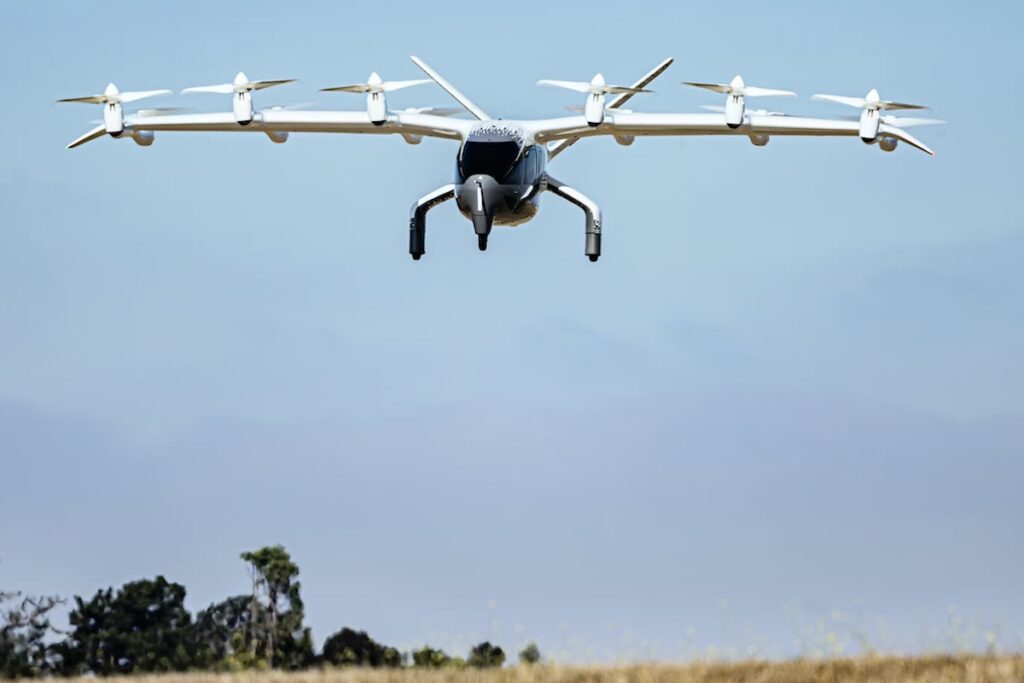
According to Archer, Midnight will be able to cover distances of up to 100 miles (130km). It will also have the capability to complete Archer’s target missions of successive back-to-back flights in the 20-mile range with a charging time of approximately ten minutes. Furthermore, it will have a payload of over 1,000 pounds (454 kg) and carry up to four passengers plus a pilot.
Archer has forecasted that it has the initial capability of producing about 250 battery-electric aircraft by 2025, following which it will gradually ramp up production to around 600 aircraft annually.
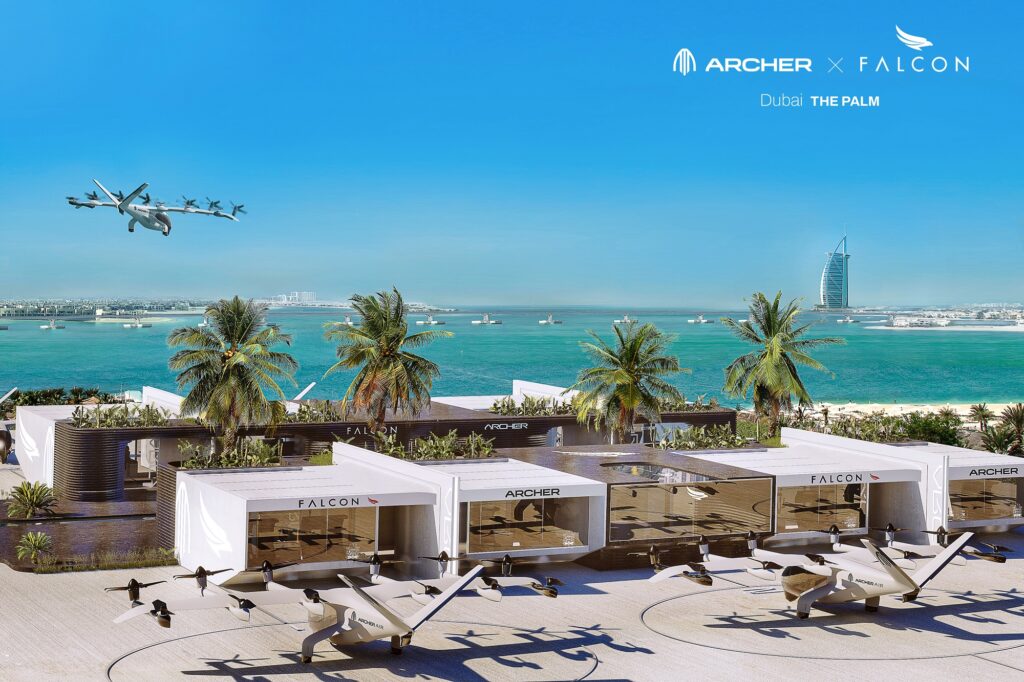
Archer is looking specifically at the use for Midnight making short hops across urban areas where congested traffic would typically make a journey last 60 to 90 minutes. For instance, it envisages missions for Midnight to be from Manhattan to either New York-JFK or Newark airports, or from Pasadena to Los Angeles International Airport. Flights on these routes are expected to last between five and ten minutes. According to the company’s founder Adam Goldstein, the cost of such trips will be comparable to the Uber Black fare on the same route.
In August 2022, the Midnight program received a significant boost when US carrier United Airlines placed an order for 100 Midnight aircraft and paid $10 million as a deposit, with the total order said to be worth more than $1 billion. The agreement also included purchase options worth an additional $500 million, and the deal means that United could eventually have a fleet of up to 200 Archer aircraft in its fleet.
In August 2023, with the Midnight development flight program well underway, the program saw another significant milestone when Archer Aviation and Wisk Aero (a Boeing-owned company) settled a long-running legal dispute from 2021 in which Wisk filed a lawsuit against Archer, accusing it of stealing its trade secrets and infringing on patents. In return, Archer accused Wisk of perpetrating a ‘false and malicious smear campaign.’ The settlement reached saw Boeing make a multi-million-dollar investment in Archer.
However, the most significant milestone towards full certification came just recently, when on June 5, 2024, the FAA awarded Archer Air (a subsidiary of Archer Aviation) with a Part 135 certificate allowing it to operate as a commercial air carrier in the United States. Part 135 certificates are awarded to companies that adhere to the necessary policies and procedures to begin operating their aircraft commercially. These companies must further operate their aircraft in accordance with the safety and operational standards that are determined by the FAA.
“We are honored to receive the Part 135 Air Carrier & Operator Certificate from the FAA, which is another important stepping stone on the way to commencing commercial air taxi operations with our Midnight aircraft,” said Goldstein. This milestone reflects our team’s unwavering dedication to safety and operational excellence as we stand up one of the world’s first electric air taxi services for communities across the U.S. with a safe, sustainable, and low-noise transportation solution.”
According to the company, Archer plans to utilize its Part 135 certificate to begin operating its aircraft commercially and refine the aircraft’s operating and flight systems. Under Part 135 rules, the certification process requires Archer to complete five final stages, including the extensive documentation of flight operations manuals. It will also assist in developing aircraft procedures ahead of launching Midnight into commercial service, once type certification has finally been completed which Archer hopes will be by the end of 2025.
Most recently, Archer announced that it had signed a deal with Signature Aviation, which will support the eVTOL operations of United Airlines at its major hubs, such as Newark and Chicago O’Hare airports, as well as at over 200 other Signature airport locations worldwide.
“We are thrilled to join forces with Signature Aviation to advance the infrastructure needed to support the future of urban air mobility. By focusing on electrifying key aviation assets in major cities such as New York and Chicago, we are taking essential steps toward making sustainable and efficient air travel a reality,” said Bryan Bernhard, Archer’s Chief Growth & Infrastructure Officer.
“This partnership will help us establish a robust network of landing sites across the country to enable the scaling of our air taxi service, ensuring our Midnight aircraft can seamlessly integrate into urban environments and provide a reliable transportation solution for our passengers,” Bernhard added.
“We’re committed to shaping the future of aviation through sustainability and thrilled to work alongside Archer as we expand our infrastructure to support the electrification of the industry,” said Derek DeCross, Chief Commercial Officer at Signature Aviation. “This collaboration unlocks new possibilities in the design and introduction of innovative sustainable aviation solutions while also bringing our guests greater access to the future of urban air mobility via Archer’s Midnight aircraft.”
Latest: Archer delivers first Midnight eVTOL aircraft to US Air Force for evaluation.
Eve Air Mobility (Embraer) – EVE
Brazilian aircraft manufacturer Embraer first mooted plans for an eVTOL aircraft as far back as 2017, when its innovation subsidiary, EmbraerX, signed a partnership deal with Uber to develop an aircraft for the Uber Elevate Network. Despite the ride-sharing company jumping ship later to partner with California-based Joby Aviation (see below), Embraer continued with the development of its EVE eVTOL aircraft concept (‘EVE’) which it expects to enter service in 2026.
Like the Archer Midnight, the EVE aircraft will be 100% electric and have space for one pilot, four passengers, plus luggage. Its launch customer was Halo, a company that stated its intention to become the ‘first global organization dedicated to vertical lift’. Halo intends to use 200 EVE eVTOL aircraft to operate hubs in London and New York.
EVE’s design features a monocoque fuselage with four wing-like fairings that each have two rotor sets on each for vertical lift. The aircraft also features two fans at the rear of the fuselage for forward propulsion, in what the company calls its ‘Lift+’ configuration. The combination means that, unlike the Archer Midnight, EVE has dedicated rotors for vertical flight and fixed wings to fly on cruise, with no components required to change position during flight.
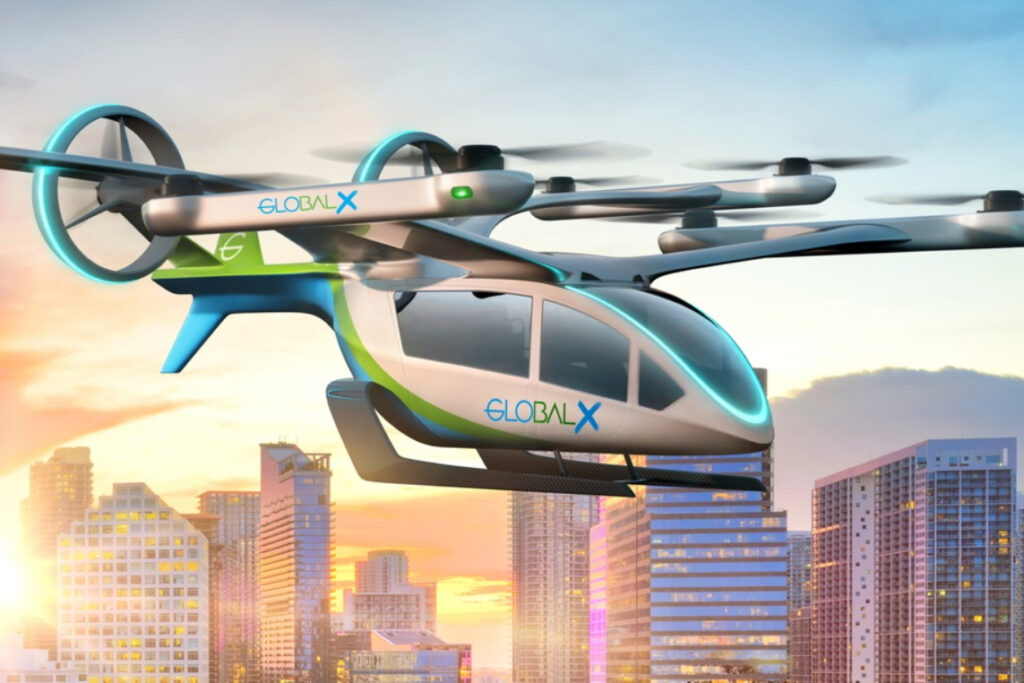
The aircraft itself can accommodate one pilot and up to four passengers. However, it has also been designed with pilotless operations in mind, for when fully autonomous flight is permissible. This will expand its capacity to six passengers. It is designed to fly at up to 125 miles per hour (200 kph) and will have a range of around 60 miles (96 km).
Early on, Embraer ran a UAM simulation program in Rio de Janeiro. This program flew four daily flights across the city using a Bell 505 helicopter. The focus, the aerospace company said at the time, was to develop services and procedures to ‘produce a safe and scalable environment’ for UAM operations. This included an emphasis on maximizing accessibility in vertiports during boarding operations. The program successfully concluded in May 2022, with Embraer convinced enough with the proof of concept to proceed with the development program. The company later replicated the series of proving flights in Chicago.
Following the tests in Chicago, the location for the headquarters of United Airlines, in September 2022 the carrier announced its second major investment in eVTOL technology when it invested $15 million in EVE, alongside a conditional purchase agreement for the aircraft. The purchase agreement covered 200 of the four-seat electric aircraft and included options for 200 more. At the time, United said it expected the first deliveries of the EVE aircraft in 2026.
Later that same month, Eve Air Mobility announced a strategic partnership with BLADE India – a joint venture between New York-based urban air mobility platform Blade Air Mobility and New Delhi-based investment firm Hunch Ventures, which includes a non-binding order of up to 200 aircraft.
As one of India’s leading short-haul air mobility services providers, the agreement will see BLADE India act as Eve Air Mobility’s on-ground knowledge partner to create the Urban Air Mobility (UAM) ecosystem in the country. The data collected through BLADE India’s customer experience and operations will be used to further develop Eve Air Mobility’s eVTOL, service, and support solutions. BLADE India will initially underwrite 50,000 hours of flight time per year using Eve’s eVTOL in the country once certified.
In December 2023, Eve Air Mobility announced it was entering the South Korean eVTOL marketplace when it announced an agreement with the country’s largest low-cost carrier, Jeju Air. The two companies created a ‘Concept of Operations’ which aimed to create a robust understanding of South Korea’s future urban air mobility industry and to create a robust plan for the implementation of new modes of UAM transport.
“As a leading airline, we want to help develop a safe operational environment for UAM, based on our business know-how and aviation experience, thereby creating new value for the aviation industry,” said Jeju Air’s Head of UAM Task Force, Taeha Park. “Just as Jeju Air popularized air travel in South Korea, we intend to do the same for UAM.”
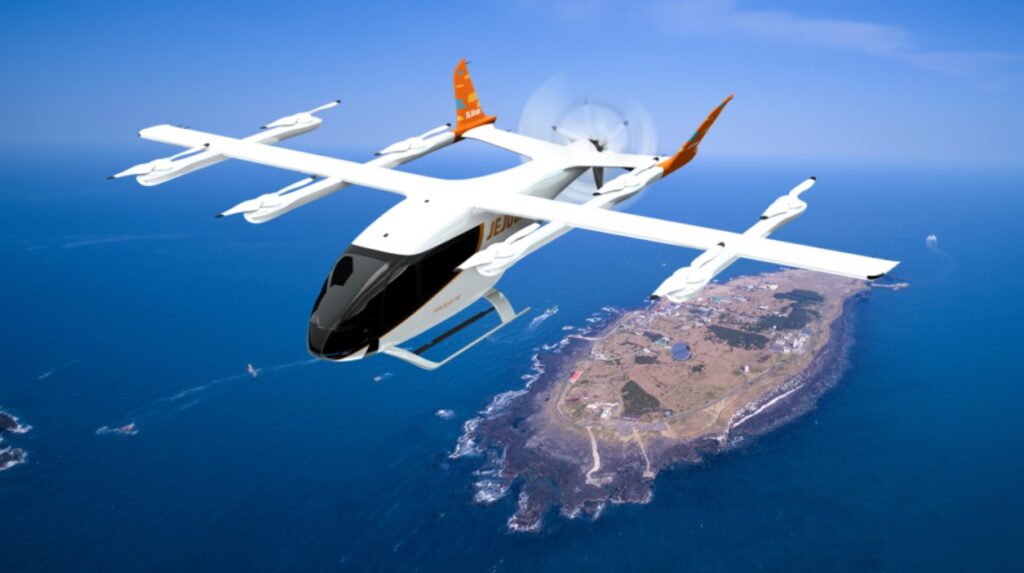
The airline aims to use Eve’s eVTOL aircraft to better connect Jeju Island, a popular vacation destination for South Korea, to its network. Such a move would create an efficient, quick, and more environmentally sustainable travel route to the island.
The current state of the EVE eVTOL program is behind that of Archer Aviation. Eve Air Mobility began production of the first EVE prototype aircraft in May 2024 and is currently predicting that the type will complete the certification process and enter commercial service in 2026, according to the company’s website.
That said, the entire EVE order book is already extremely impressive for an aircraft that is yet to fly for the first time. Almost 3,000 aircraft are either on firm order or have letters of intent signed for them from 26 different customers. Notable future operators of the type include Falcon Aviation Services (Dubai-35), Fahari Aviation (part of Kenya Airways-40), Global Crossing Airlines (United States-200), Widerøe Zero (Norway-50), Nordic Aviation Capital (50), United Airlines (200) and Ascent Aviation (Singapore-100).
Latest: Embraer-backed Eve Air Mobility unveils first full-scale eVTOL prototype.
Joby Aviation
Having started exploring the realms and possibilities of eVTOLs before either Archer or Eve Air Mobility, Joby Aviation’s journey has been the longest of any of the UAM manufacturers to date. However, its development program is the most advanced among its competitors with an aircraft actually in service.
Joby’s eVTOL aircraft is powered by six lithium-ion motors and has the capability to carry a pilot and four passengers at speeds of up to 200mph. Again, like its counterparts, it is designed for short urban hops of around ten minutes duration.
Joby’s eVTOL story began as far back as 2009 when its initial team of seven engineers worked out of ‘The Barn,’ – the company’s workshop located in the Californian hills above the town of Santa Cruz. Exploring the possibilities of technologies such as electric motors, flight software, and lithium-ion batteries, the team began developing conceptual designs for its first eVTOL.
The team’s knowledge base was boosted in 2012 when the firm partnered with NASA on several groundbreaking electric flight projects, including the X-57 and LEAPTech to explore the capabilities of VTOL aircraft in general.
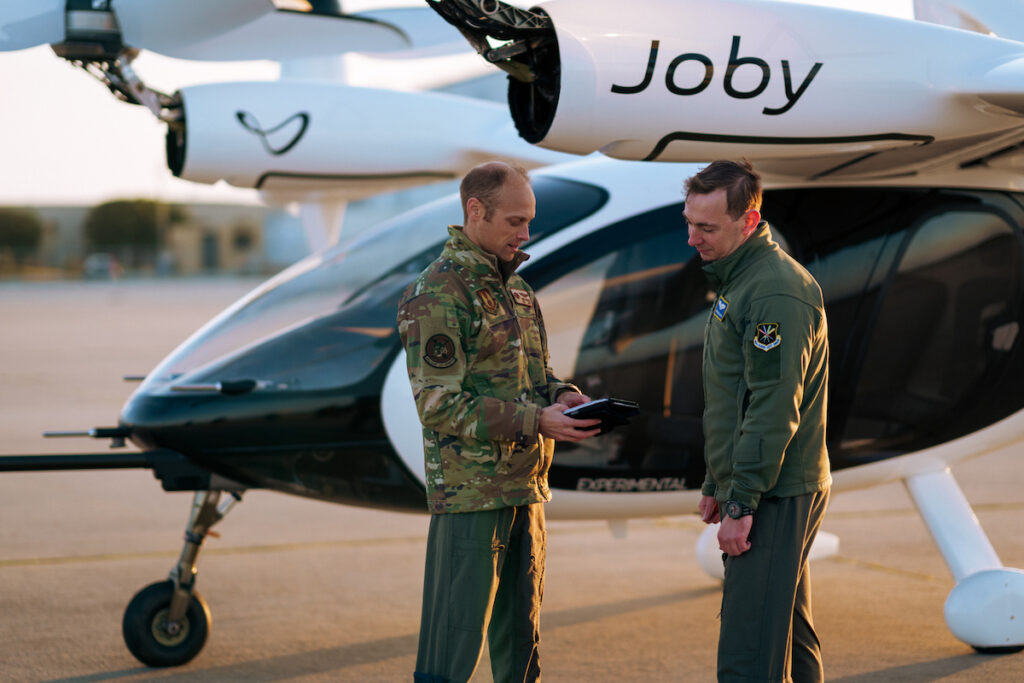
In 2015, following several years of subscale testing and analysis, Joby fixed its eVTOL aircraft configuration and flew a demonstrator subscale prototype for the first time, while in 2017, its first full-scale prototype flew its inaugural mission. By 2019, the prototype was engaged in a full-time flight certification test program, and in 2020, Joby became the first eVTOL company to receive airworthiness approval from the US Air Force (USAF).
Flying a Joby aircraft on a USAF base while having access to government testing facilities has provided the company “an opportunity to develop our operational capabilities in advance of commercial launch” said Joby at the time.
In 2020, Joby expanded its already hugely important collaboration with Uber and its eVTOL division Uber Elevate. The enhanced partnership aimed to integrate Joby’s aerial ridesharing service into the Uber app, and vice versa, across all US launch markets. While Uber increased its investment in Joby, the eVTOL manufacturer acquired Uber’s Elevate division, bringing its software tools and commercial launch expertise in-house for the first time.
Also in 2020, Joby was granted an initial Stage 4 G-1 certification by the FAA, having received an initial Stage 2 G-1 from the agency in 2019. This document laid out a clear path to certifying Joby’s aircraft for commercial flights – a process that is now nearing completion.
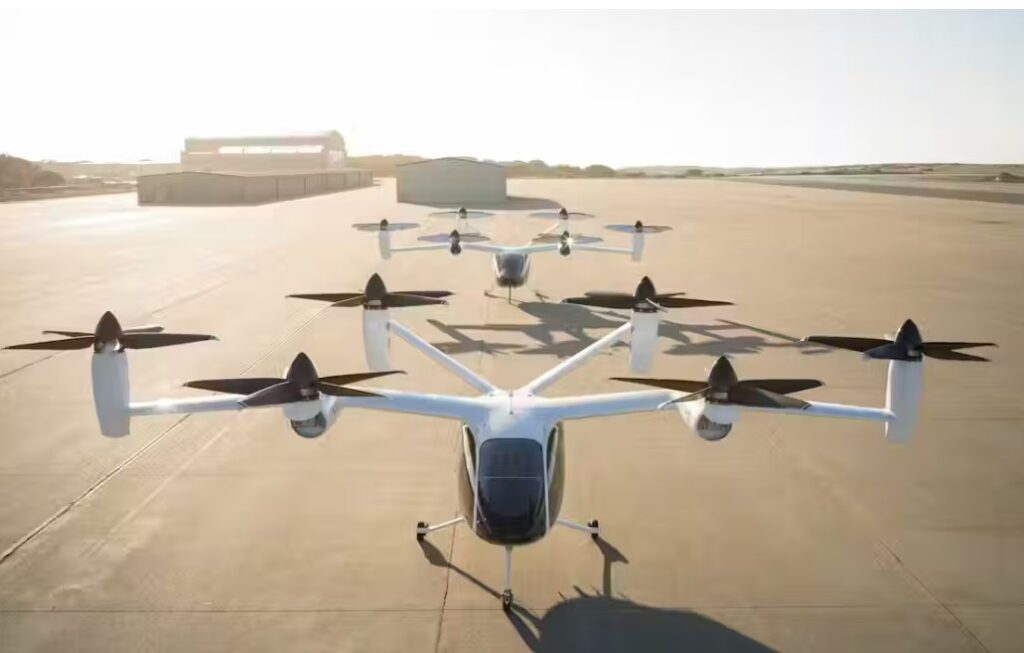
In 2021, Joby was listed on the New York Stock Exchange while its pre-production prototype flew more than 5,300 miles, including a flight of 154.6 miles on a single charge. It also built a second pre-production prototype, completed our first FAA production conformity inspection, and officially began the company’s journey to become the first FAA-certified eVTOL airline. In 2022, Joby received its Part 135 Air Carrier Certificate from the FAA, which allowed Joby to begin commercial air taxi services.
The whole Joby eVTOL project received a huge boost in October 2022, when US carrier Delta Air Lines made a significant investment in Joby and the companies entered a widescale commercial agreement for the development of eVTOL flights. According to the airline, the deal was envisaged to “deliver transformational, sustainable home-to-airport transportation service to Delta customers, beginning in New York and Los Angeles”.
As part of the first-of-its-kind arrangement, the companies agreed to work together to integrate a Joby-operated service into Delta’s customer-facing channels, providing customers who travel with Delta through New York and Los Angeles the opportunity to reserve a seat for seamless, zero-operating-emission, short-range journeys to and from city airports when booking Delta travel.
Delta made an upfront equity investment of $60 million in Joby under the terms of the agreement, with the opportunity to expand the total investment up to $200 million as the partners achieved substantive milestones on the development and delivery of the service.
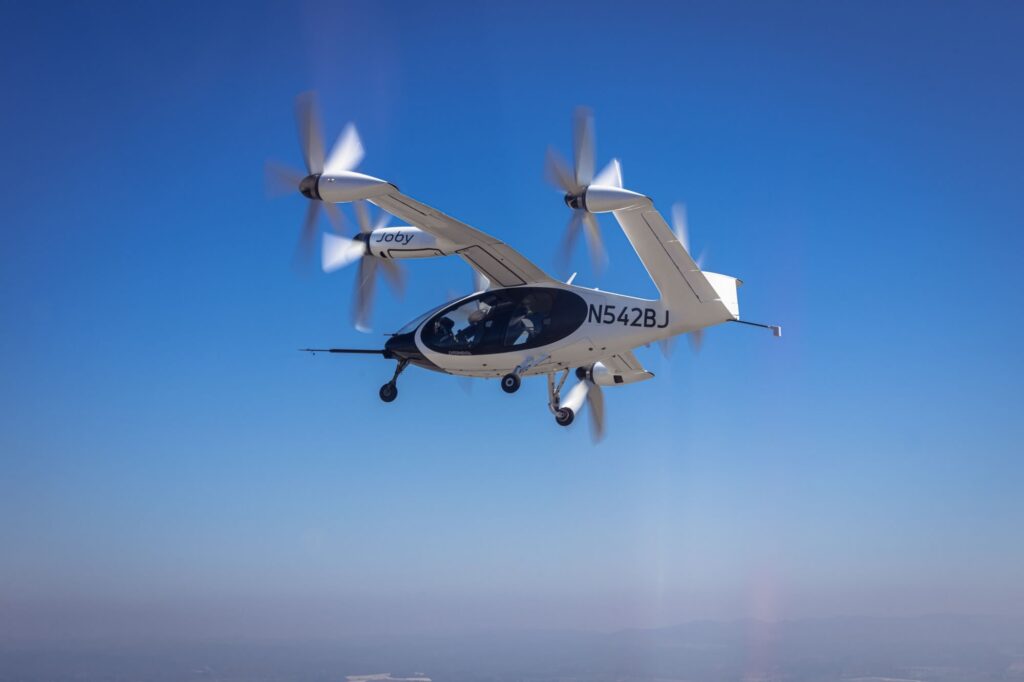
Additionally, the two partners agreed to “work together to create a differentiated, premium experience for Delta customers featuring seamless booking, simplified transit, and greater time savings. This will run alongside Joby’s standard airport service in priority markets. The partnership will be mutually exclusive across the US and UK for five years following commercial launch, with the potential to extend that period,” said Delta at the time of the announcement.
“Delta always looks forward and embraces opportunities to lead the future, and we’ve found in Joby a partner that shares our pioneering spirit and commitment to delivering innovative, seamless experiences that are better for our customers, their journeys, and our world,” said Delta CEO Ed Bastian in 2022. “This is a groundbreaking opportunity for Delta to deliver a timesaving, uniquely premium home-to-airport solution for customers in key markets we’ve been investing and innovating in for many years.”
Joby began the flight test program of its full production aircraft in June 2023 and that same year announced plans to build a first scaled production site in Dayton, Ohio. The 140-acre site at Dayton International Airport will be capable of delivering up to 500 aircraft per year when fully completed.
As part of the test program, in November 2023, a Joby demonstrator aircraft operated an exhibition flight in collaboration with New York City Mayor Eric Adams’ office.
“We plan to make quiet, emissions-free flights an affordable, everyday reality for New Yorkers while significantly reducing the impact of helicopter noise,” said Joby Aviation Founder and CEO JoeBen Bevirt following the flight. “By electrifying one of the most famous heliports in the world, New York is demonstrating global leadership in the adoption of electric air travel. We are grateful for the support of the city, and we are honored to be working with visionary partners like Delta Air Lines to bring our air taxi service to this market”.
Joby Aviation is expecting deliveries of its eVTOL aircraft to begin in 2025.
Latest: Joby completes record-breaking 523-mile hydrogen-electric eVTOL flight
Vertical Aerospace – VX4
UK-based Vertical Aerospace‘s VX4 eVTOL aircraft is a four-passenger aircraft, capable of traveling more than 100 miles (160 kilometers). It has a top speed of more than 200 miles per hour (320 km/h) at a low cost per passenger mile while producing zero emissions and minimal noise.
With its partners, which include Rolls-Royce, Honeywell, Microsoft, GKN, and Leonardo, Vertical is now in the process of certifying the VX4 while also developing a manufacturing facility, development of the company’s commercial platform, and the scale-up of production which is expected to cost approximately US$250 million.
The aircraft’s design is not unlike that of its competitors, with the fuselage beneath the high wing that incorporates four tilt-rotor motors. The aircraft is currently engaged in the certification process with the UK Civil Aviation Authority, although this process suffered a major setback in August 2023, when the prototype aircraft crashed during a test flight and suffered significant damage. The certification process was significantly set back because of this incident.
Despite this, Vertical has sold its VX4 aircraft directly to a broad range of customers, including aircraft lessors, airlines, helicopter operators, and tourism groups. The global reach achieved through Vertical’s conditional pre-orders for its VX4 means it has the largest pre-order book by value currently in the eVTOL market, worth US$5.4bn.
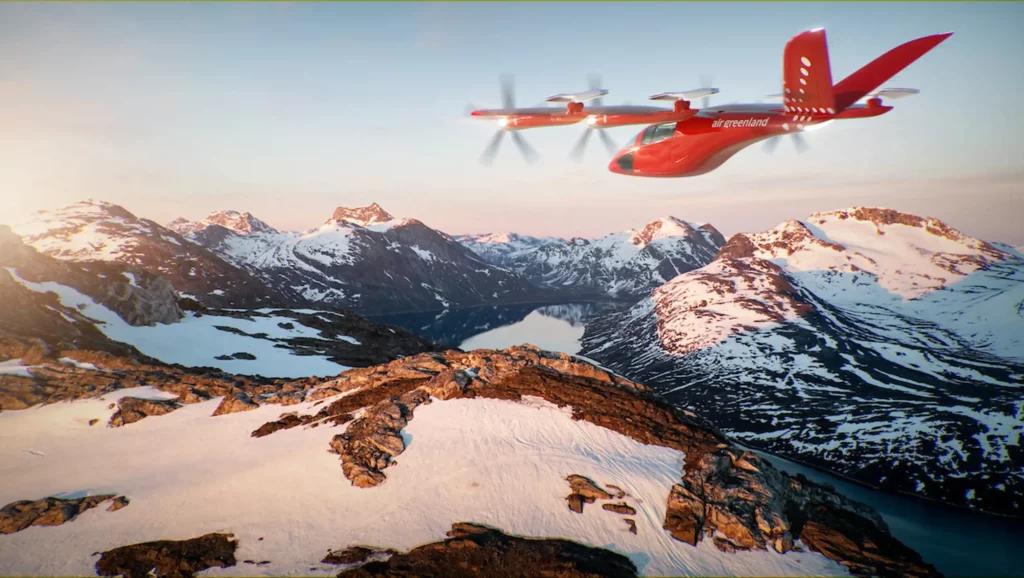
Since the launch of the VX4, Vertical has racked up pre-orders for up to 1,350 aircraft. Customers include American Airlines, Avolon, Bristow, and Iberojet, along with conditional pre-orders from Virgin Atlantic and Marubeni Holdings in Japan. American Airlines, with its order for up to 350 VX4, scored an industry first when it committed to placing a pre-delivery payment for the delivery slots of its first 50 production aircraft.
Meanwhile, global aircraft leasing firm Avalon sold out its pre-order of 500 aircraft in just nine months. Avolon, the world’s second-largest aircraft lessor with its headquarters in Ireland, pre-ordered 500 VX4s in June 2021 worth in the region of US$2 billion. Avalon has placed aircraft with major airlines such as JAL, AirAsia, and Brazil’s largest airline GOL.
In all, when certified, the VX4 will fly in the US, UK, Japan, Brazil, Turkey, Greenland, Southeast Asia, and the Caribbean, which the company promises will be by the “middle of this decade”.
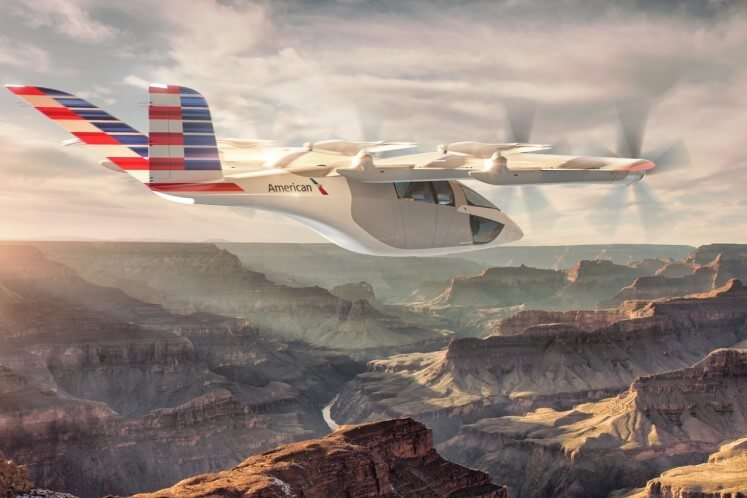
In May 2024, when releasing its financial results for 1Q24, Vertical Aerospace said that the final assembly of its new full-scale VX4 prototype was nearing completion and the aircraft remained on track to begin its test program ahead of intended public demonstrations later in 2024 with a view to CAA certification, although the firm has not given an update on when the aircraft’s entry into service might be.
However, as an update to the program, in July 2024, Vertical’s redesigned VX4 testbed successfully flew for the first time, entering a tethered hover. The tethered piloted flight took place after the UK Civil Aviation Authority had issued Vertical a Permit to Fly for its VX4 prototype, having rigorously evaluated the engineering, design, test data, and aircraft, effectively conducting a ‘mini certification ‘program of the aircraft.
Latest: Vertical Aerospace unveils new generation full-scale VX4 eVTOL prototype
Lilium – Lilium Jet
One manufacturer that is taking a different approach to eVTOL flight is the German company, Lilium. Since its launch in 2015, the firm is now approaching the last key stages before launching its own eVTOL aircraft. Its sleek, futuristic-looking aircraft, called the Lilium Jet, will be able to carry five people (four passengers and a pilot) over distances of up to 175 kilometers (about 108.74 miles) at speeds of up to 300km/h (187 mph).
The aircraft’s technology, range, and capability are all seen as essential for Lilium’s primary mission, which is to enable regional air mobility – an approach that has set the German company apart from other eVTOL developers which are focused on urban air mobility instead.
The Lilium jet differs from most eVTOL developments in that it is powered by jets as opposed to rotors or propellors like its competitors. Its engines are integrated into the wing trailing edge flaps and rely on a single-stage rotor/stator system driven by an electric motor.
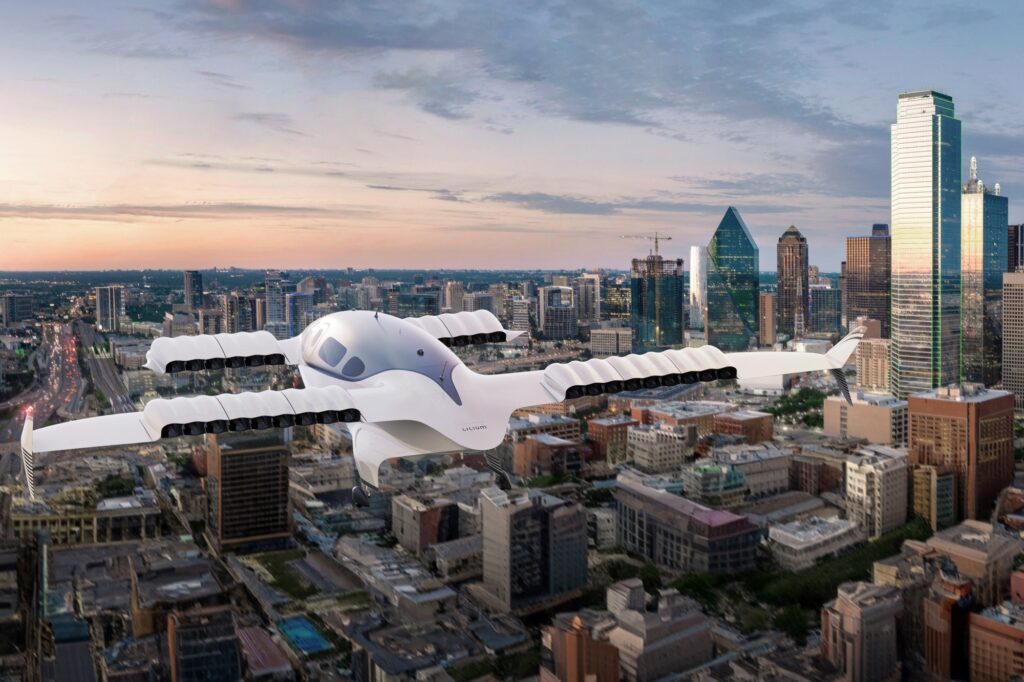
Not only does Lilium envisage its aircraft creating a new market for air mobility connecting cities at a regional level, but it is also looking at ways for airlines to integrate eVTOL operations with their mainline businesses. This is why it has partnered with airlines like Lufthansa and Saudia.
Significant orders secured by Lilium include 50 units for Bristow Group, 40 for Norway’s AAP, up to 100 for Saudia, and, perhaps the most significant, 200 of the jets for Brazilian airline Azul in a deal said to be worth $1 billion. In May 2024, the company announced an agreement with Florida-based startup airline UrbanLink for 20 Lilium Jets, plus options for 20 more.
UrbanLink aims to operate inter-urban services in South Florida, connecting places such as Miami, West Palm Beach, Boca Raton, Fort Lauderdale, and Marco Island, from 2026, which is also the target year for the Lilium Jet to enter service.
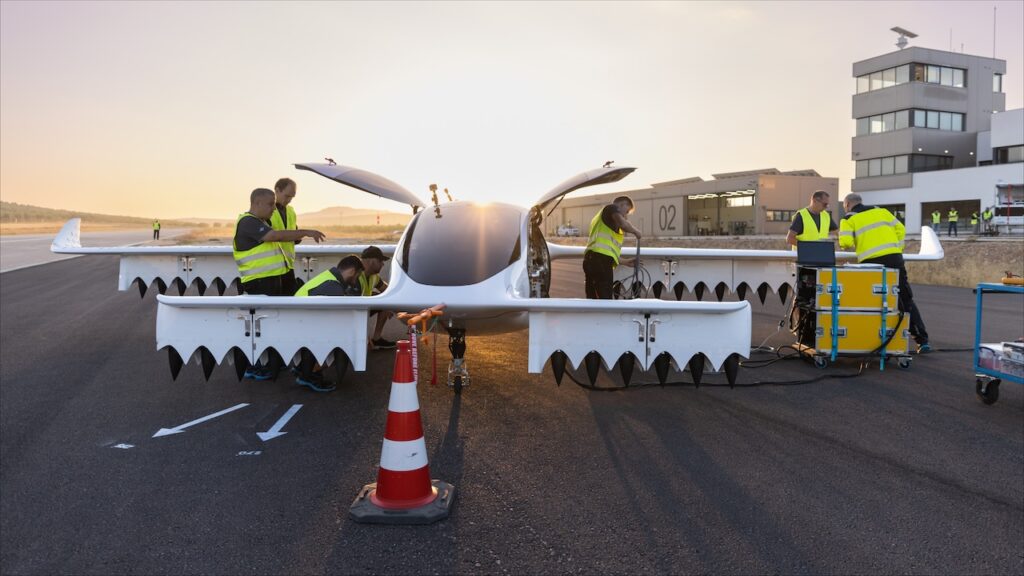
Construction of the first aircraft is still underway at the firm’s manufacturing plant near Hamburg, as visited by AeroTime in May 2024.
Latest: Saudia and Lilium confirm deal for rumored purchase of up to 100 eVTOL aircraft.
Conclusion
It should be noted that while this article has focussed on the five eVTOL designs leading the way toward certification and the introduction of commercial urban eVTOL operations, there is a plethora of other innovators developing their own eVTOL aircraft designs. These include Airbus subsidiary CityAirbus and Volocopter in Europe, plus the China-based companies EHang, AutoFlight, and Xpeng.
However, while the excitement of technological innovation, ground-breaking design concepts, and pioneering aeronautical engineering have brought many aspiring aircraft companies to the eVTOL party, ongoing funding could be an issue that could see many fall by the wayside before their projects ever reach certification.
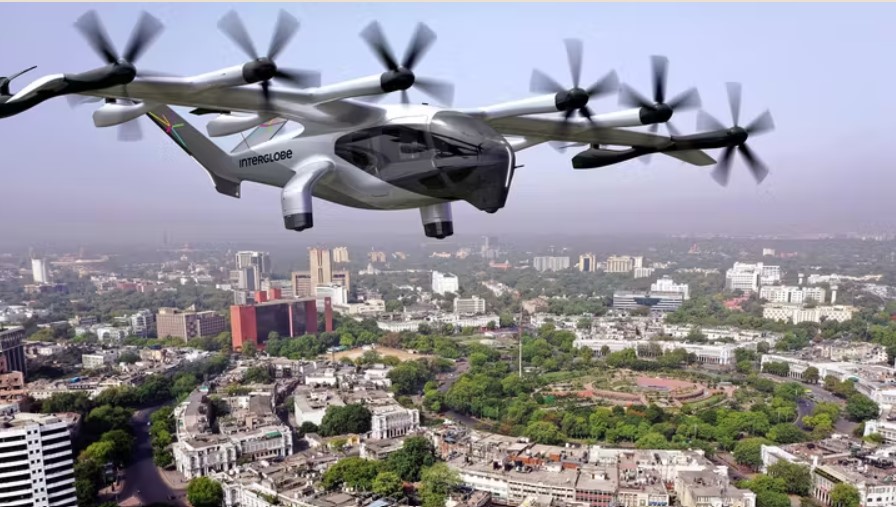
But with the Midnight, EVE, Joby’s eVTOL, the VX4, and the Lilium Jet all likely to make their commercial debuts by the end of 2026, the future of urban air mobility is closer than you might imagine.
Without a doubt, the industry has come a long way since appearing as simple fantasy on the pages of those comic books in years gone by imagining travel of the future.
What are your views on eVTOL aircraft? Are you looking forward to flying on eVTOL aircraft when they eventually enter service? Share your views in the comments section below.

